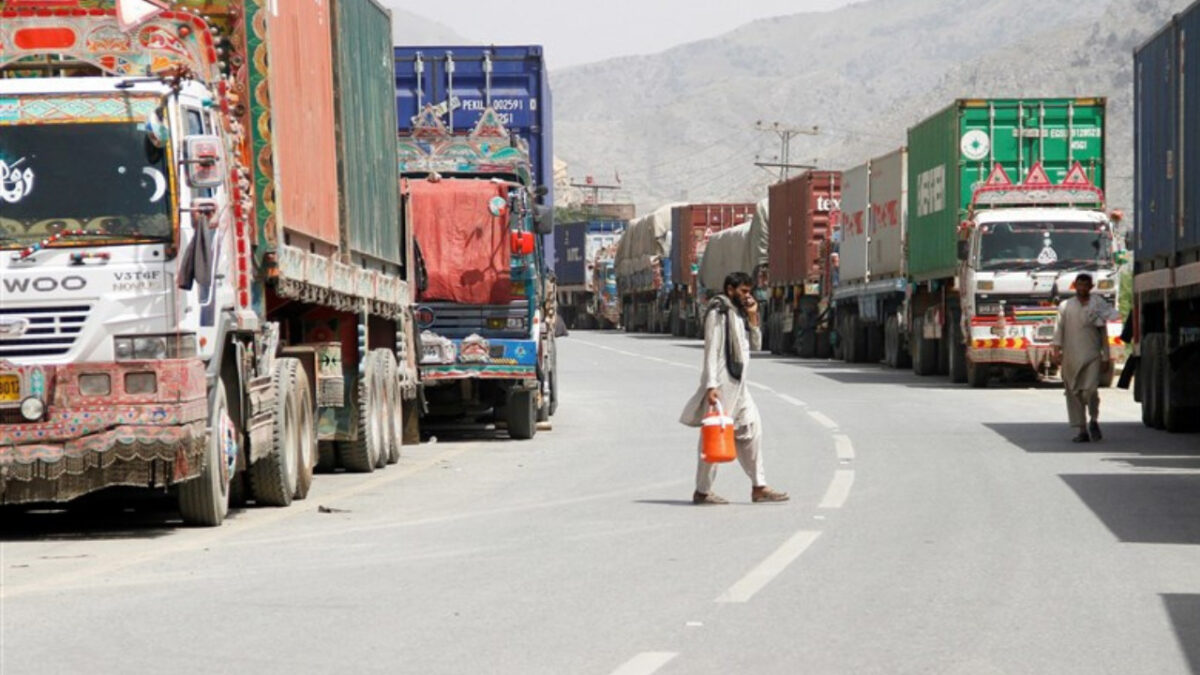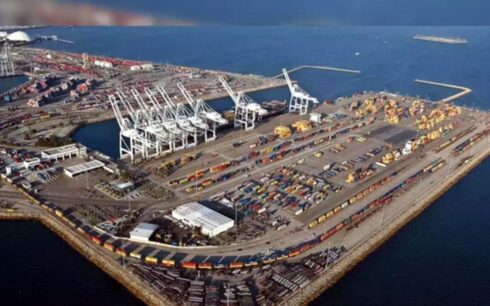The World Bank, in a new report, has highlighted that Afghanistan’s weak economy has led to deflation and poverty. The report details that the deflationary process, which started in April 2023, has continued into December 2023.
The report says that the economy is adjusting to reduced aggregate demand, which is impacted by several factors. These include the appreciation of the local currency, the depletion of household savings, lower public spending, and the loss of farmers’ income due to the opium cultivation ban.
The report elaborates that the headline inflation in Afghanistan fell to a negative 9.7 percent year-on-year in December 2023.
This decrease is due to a drop in both food inflation, which fell to negative 14.5 percent, and non-food inflation, which decreased to negative 4.2 percent. These figures are indicative of weak demand across the country. Additionally, core inflation, which excludes food and energy prices, also fell to -6.0 percent year-on-year. These economic challenges have led to increased unemployment, with the report stating that half of Afghanistan’s population is now living in poverty and 15 million people are facing food insecurity.
Coal exports saw substantial reduction
In 2023, Afghanistan’s total exports amounted to $1.9 billion, marking only a modest increase of 0.4 percent from the previous year, the World Bank’s report notes. However, there was a significant shift in the nature of these exports.
Coal exports, which were a major contributor in 2022 with earnings of $476 million, saw a substantial reduction of 46 percent in 2023, bringing the total down to $257 million, the report says.
In contrast, the report adds, food exports experienced a growth of 13 percent, reaching $1.3 billion compared to $1.1 billion in 2022. Textile exports also saw notable growth, surging by 46 percent in 2023 to reach $281 million, up from $192 million in the previous year. The report specifies that Pakistan and India remained the primary export destinations, accounting for 54 percent and 31 percent shares, respectively. However, exports to Pakistan decreased by 15 percent, dropping to $1.0 billion in 2023.
Notably, 70 percent of exports to Pakistan comprised food and coal, with coal exports witnessing a substantial 46 percent decline. Food exports to Pakistan contracted by 10 percent, reaching $450 million in 2023, and constituting 36 percent of the total food exports. Conversely, food exports to India surged by 43 percent, reaching $578 million in 2023, and accounting for 46 percent of the country’s total food exports.
The report indicates that this surge in exports to India helped to offset the decline in exports to Pakistan.
Imports grew faster than exports in 2023
The World Bank’s report also touches on the revenue collection in Afghanistan. It states that the ITA (Islamic Transitional Authority) collected AFN 171.0 billion in revenue during the first ten months of the fiscal year 2023-24.
However, this figure fell short of the target due to underperformance in both inland and border revenues. In 2023, Afghanistan’s imports surged to $7.8 billion, marking a significant 23 percent increase from the previous year’s $6.3 billion.
The report provides a breakdown of these imports, stating that food imports, which accounted for 22 percent of the total, grew by 9 percent to $1.7 billion.
Key food imports included a variety of essential items such as cereal, edible vegetables, malt, starches, inulin, wheat gluten, and tobacco. Minerals, including fuel, mineral oils, salt, and sulfur, contributed 20 percent to the total imports, increasing by 15 percent from $1.3 billion in 2022 to $1.6 billion in 2023.
The report notes that textile imports increased by 11 percent, from $0.65 billion in 2022 to $0.72 billion in 2023. Food, textiles, and minerals collectively accounted for over half of the total imports.
Notably, the report highlights that chemicals, machinery, and transportation products experienced significant import growth of 37 percent, 63 percent, and 85 percent, respectively, in 2023. Iran was the largest import origin country, accounting for 23 percent of the imports, followed by Pakistan (19 percent), China (15 percent), and the United Arab Emirates (15 percent). The overall merchandise trade deficit for Afghanistan in 2023 widened by 34 percent to $5.9 billion, up from $4.4 billion in 2022.
Afghani appreciated against major currencies during 2023
The World Bank report further states that in 2023, despite the burgeoning trade deficit, the Afghani (AFN) strengthened against several major currencies.
The report details the appreciation rates: the AFN appreciated by 27.1 percent against the US dollar, 23.4 percent against the Euro, 23.0 percent against the Chinese Yuan, 25.7 percent against the Indian rupee, and 42.1 percent against the Pakistani rupee.
Additionally, the report adds that the AFN saw a substantial 60.0 percent increase against the Iranian Toman. By December 26, 2023, the AFN traded at 70.13 against the US dollar, marking an appreciation of 22.8 percent since August 15, 2021.
The report acknowledges the difficulty in ascertaining the monetary policy stance of the DAB (Da Afghanistan Bank) in the absence of monetary statistics. However, it notes that regular news items suggest that the central bank undertakes frequent forex auctions to support the value of the local currency.
The report asserts that propping up the AFN indicates that the exchange rate is the operational target for monetary policy in Afghanistan.
The report also mentions that there has been a trend reversal more recently, as in January 2024, the AFN depreciated against all major currencies. For instance, it depreciated by 4.5 percent against the US dollar and 3.7 percent against the Euro.
Revenue collection
The World Bank report also delves into revenue collection in Afghanistan.
It states that in the first ten months of the fiscal year 2023-24, revenue collection fell short of the target due to underperformance in both domestic revenue and border taxes.
The report specifies that revenue collection for the initial ten months of FY 2023-24 (March 22, 2023, to January 21, 2024) reached AFN 171 billion, a 5.7 percent increase compared to the same period in the previous fiscal year.
The report adds that border taxes collected by the Afghanistan Customs Department (ACD), accounting for 54 percent of the total revenue, grew moderately by 4 percent despite the substantial 20 percent increase in imports during the period under discussion. According to the report, factors such as the strong AFN appreciation, reduced import value in local currency, lower import tariffs on certain food items, decreased Business Receipt Tax on raw materials for manufacturing companies, and border closures contributed to this sluggish growth.
Inland revenues collected by the Afghanistan Revenue Department (ARD) showed better growth at 8.2 percent compared to the same period last year. This growth is attributed to the Small Taxpayer Office (STO) and Mostafiat (provinces collection).
However, the report points out that the ARD remains 4 percent below the target, and ACD collection lags by 1 percent.
The report warns that while domestic revenue at approximately 17 percent of the 2023-24 GDP1 drags on an already depressed economy, implementing rigorous tax collection measures in a context where the scope of budget implications as an economic policy tool and social transfers is limited could potentially hinder economic growth, worsen poverty, and lead to business closures, thereby further limiting the potential for future revenue collection.





